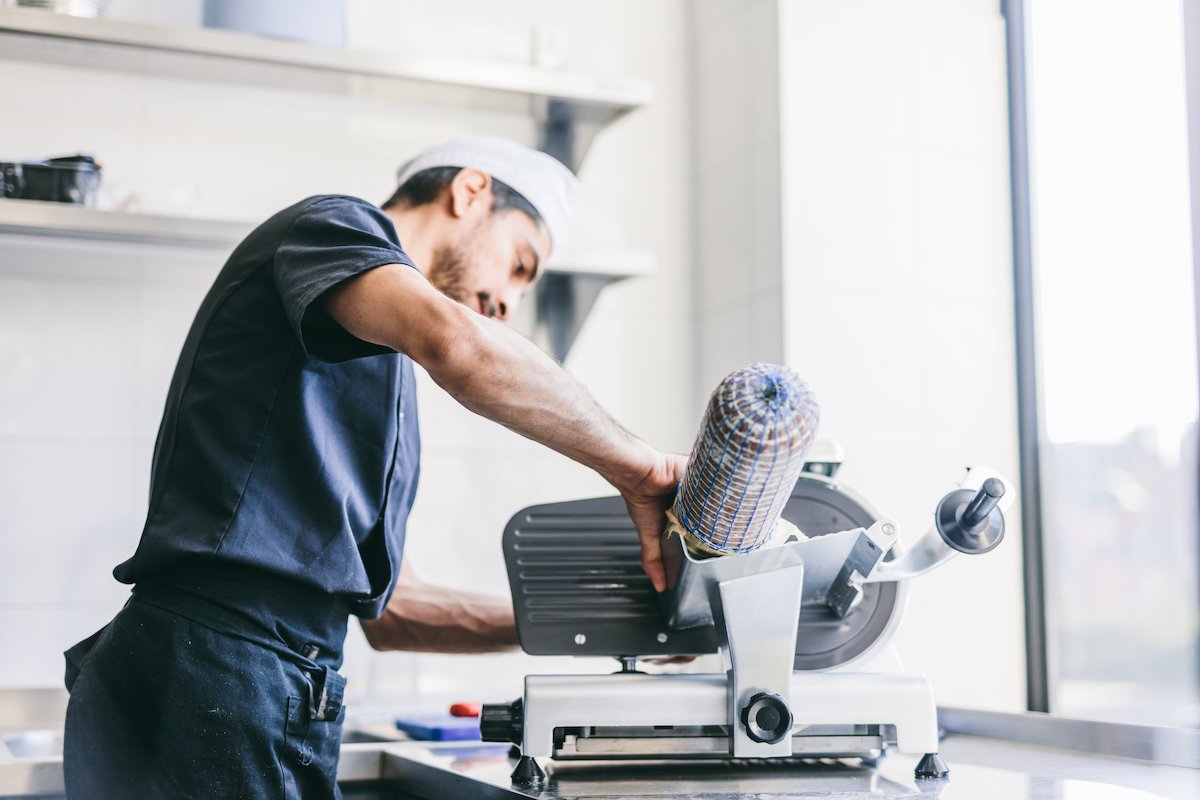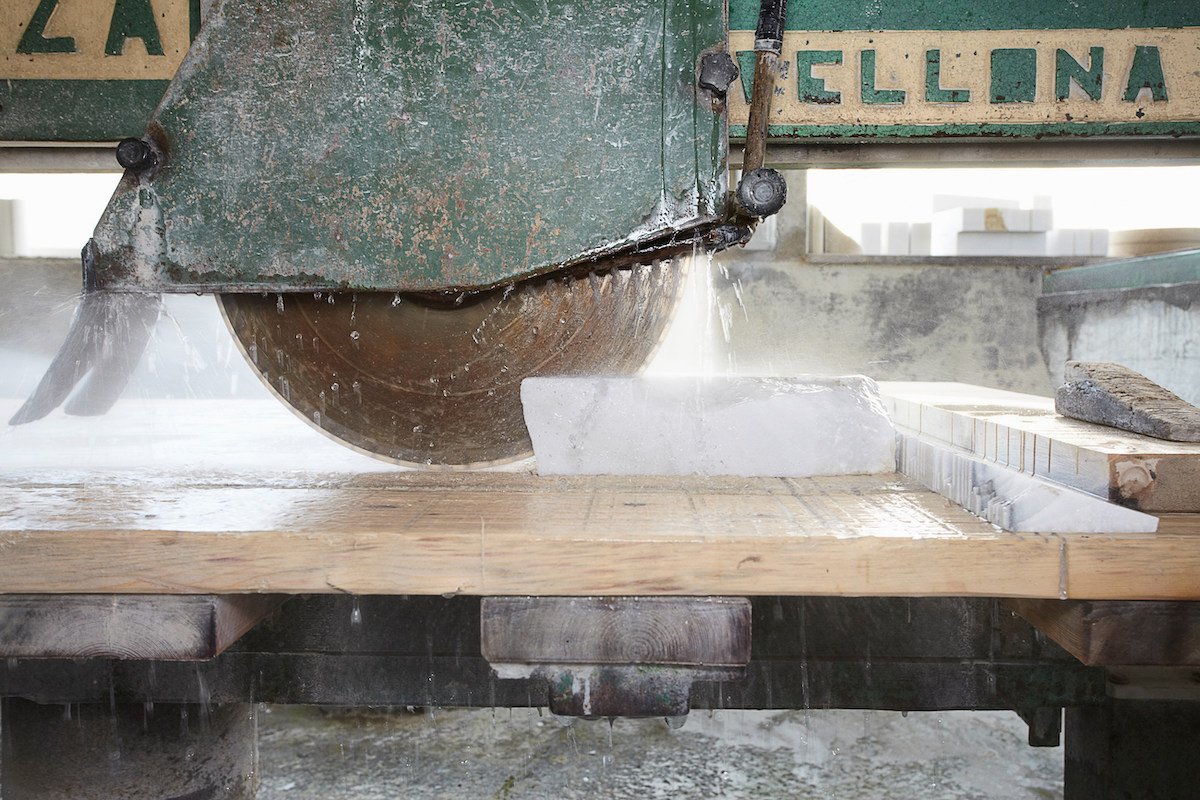Meat Slicer Safety
Languages: English
Media Editing: The video module(s) in this subject are editable under our Content Studio offering unless otherwise indicated. For more information about Content Studio, contact your CSM.
Description: Meat slicers, although very useful, can be extremely dangerous if they are not maintained and operated properly. Many meat slicers are not cleaned in a way that meets the required standards, so they can hold a variety of contaminants, which can lead to foodborne illnesses. In this subject, learners are taught about the standards for properly operating a meat slicer so they can prevent serious injuries, as well as ways to effectively clean a meat slicer and how to inspect that a meat slicer is safe to operate before even turning it on. Strategies include identifying which parts should be submerged in water, how the meat slicer carriage should be used, and more.
Languages: English
Media Editing: The video module(s) in this subject are editable under our Content Studio offering unless otherwise indicated. For more information about Content Studio, contact your CSM.
Description: Meat slicers, although very useful, can be extremely dangerous if they are not maintained and operated properly. Many meat slicers are not cleaned in a way that meets the required standards, so they can hold a variety of contaminants, which can lead to foodborne illnesses. In this subject, learners are taught about the standards for properly operating a meat slicer so they can prevent serious injuries, as well as ways to effectively clean a meat slicer and how to inspect that a meat slicer is safe to operate before even turning it on. Strategies include identifying which parts should be submerged in water, how the meat slicer carriage should be used, and more.
Languages: English
Media Editing: The video module(s) in this subject are editable under our Content Studio offering unless otherwise indicated. For more information about Content Studio, contact your CSM.
Description: Meat slicers, although very useful, can be extremely dangerous if they are not maintained and operated properly. Many meat slicers are not cleaned in a way that meets the required standards, so they can hold a variety of contaminants, which can lead to foodborne illnesses. In this subject, learners are taught about the standards for properly operating a meat slicer so they can prevent serious injuries, as well as ways to effectively clean a meat slicer and how to inspect that a meat slicer is safe to operate before even turning it on. Strategies include identifying which parts should be submerged in water, how the meat slicer carriage should be used, and more.
Topics
How to Safely Operate a Meat Slicer
-
Most accidents with meat slicers involve the blade, so it’s important to know how to operate it properly. In this topic, techniques are taught on how to reduce contact with the blade, and how to prepare the meat slicer for safe use. This includes information about what gloves to wear and when, how to prepare the machine for cutting, and more.
-
Questions (level 1, 2, 3)
Video module
-
This topic is currently available in English.
-
Make sure the blade guard is in place before turning on the machine to avoid injuries or accidents involving the blade.
Make sure the surface and work area around the meat slicer is clean and clear of other items that could cause injuries, like food particles, grease, knives, etc. to help avoid accidental injury.
Wear cut-resistant gloves covered with single-use food-grade gloves while operating the machine to avoid cutting your hands or fingers and to reduce risk of bacteria spreading.
Make sure the blade is ‘closed’ (cutting thickness is set at zero), and the machine is switched off and unplugged when not in use, so it cannot be turned on accidentally.
Before turning the machine on, pull the carriage towards you to load the meat, and make sure the meat is secure in the machine so that it won’t slip during slicing.Before turning on the machine, select the cutting thickness, then plug in and turn on the meat slicer. This will help to avoid accidentally cutting yourself while setting the blade thickness.
Use the carriage handles to push the meat towards the blades, so your hand doesn’t come in contact with the blade.
Wait for the cutting wheel (blade) to come to a complete stop before you remove the meat, so you don’t injure yourself.
Focus on one task at a time when the slicer is in use, so you’re not distracted which can lead to making a mistake or causing an accident.
All meat slicer operators must be trained by an experienced operator before working on their own, so they are properly qualified.
How to Safely Clean a Meat Slicer
-
There are many safety considerations when cleaning a meat slicer, so strategies for how to prepare to clean a meat slicer safely while avoiding the blade are taught in this topic. This includes what personal protective equipment should be worn, how to wipe the blade, and more.
-
Questions (level 1, 2, 3)
Video module
-
This topic is currently available in English.
-
Always completely clean the meat slicer when switching between different kinds of foods to avoid contamination.
Always wipe the blade starting in the center and working towards the outside to prevent cutting yourself on the blade.
Always wear protective, cut-resistant gloves while cleaning the meat slicer to avoid cutting your hand or fingers.
Fully clean the machine every four hours and at closing time to prevent the transfer of potentially hazardous bacteria from the slicer to ready-to-eat foods.
Ensure the machine is turned off and unplugged before you begin cleaning it to prevent accidentally turning on the machine during cleaning.
Make sure the blade has stopped spinning and the blade thickness is set to zero before you start cleaning to prevent cutting yourself.
How to Prevent Bacteria Growth on a Meat Slicer
-
In addition to preventing physical injury, preventing bacteria growth must also be considered when cleaning a meat slicer. In this topic, learners are taught where and how to wash the removable parts and the motor/electrical parts of a meat slicer. This includes which part of a 3-compartment sink to use, what can be submerged in water, etc.
-
Questions (level 1, 2, 3)
-
This topic is currently available in English.
-
Wash removable parts in the first part of a 3-compartment sink with warm water and a mild detergent to breakdown built up dirt.
After washing the removable parts, rinse them in the second part of a 3-compartment sink with warm, clean water to remove the detergent completely.
After rinsing the removable parts, sanitize them in the third part of a 3-compartment sink to reduce the number of bacteria.
Do not submerge the motor or electrical pieces in water, or put them in a dishwasher, as this could damage the machine.
Gently wipe down the electrical and motor pieces with a soft cloth, hot water, and a mild detergent.
After wiping motor pieces with detergent, clean off the detergent with rinse water using a clean disposable towel, and then apply a small amount of your store’s approved sanitizer which will help prevent contamination.
Allow the meat slicer to air dry as wiping it with a towel could spread or introduce bacteria. (When necessary, use paper towels.)
Cover the machine at the end of the day to make sure it does not collect bacteria while not in use.
Preview of topic image for “How to Prevent Bacteria Growth on a Meat Slicer” as this topic is questions only.







